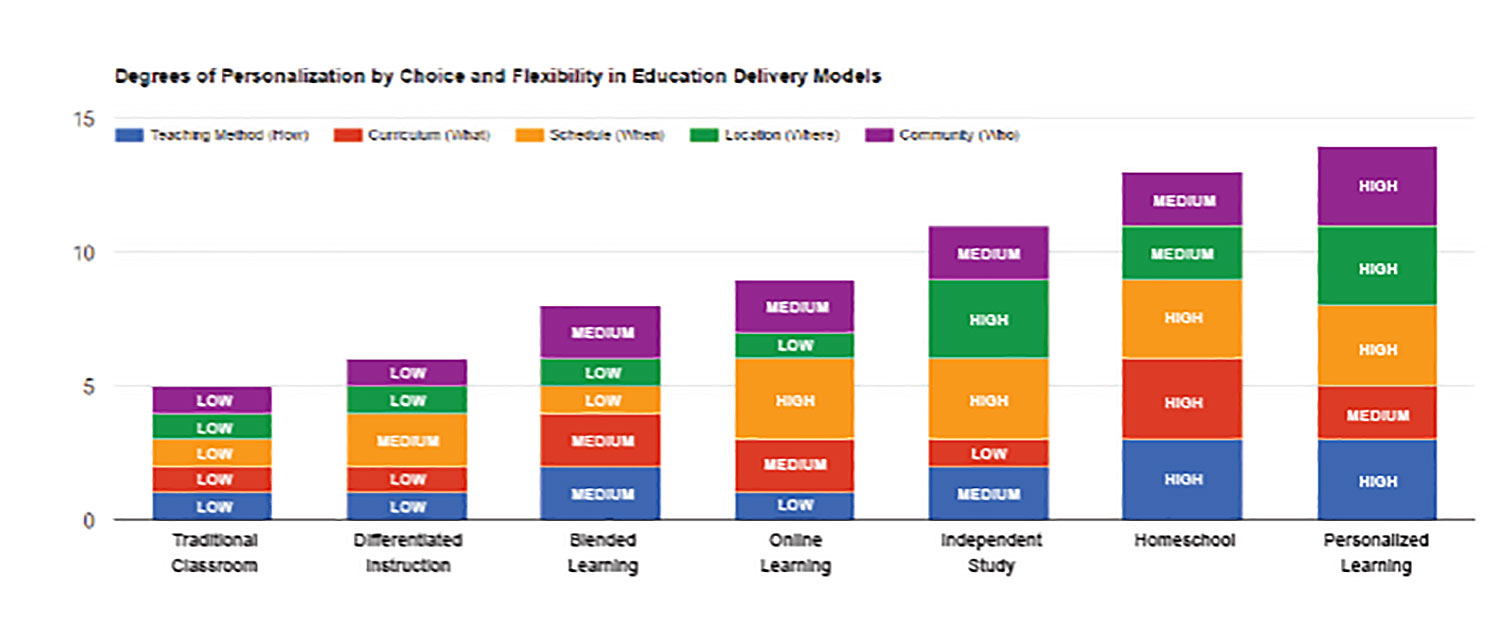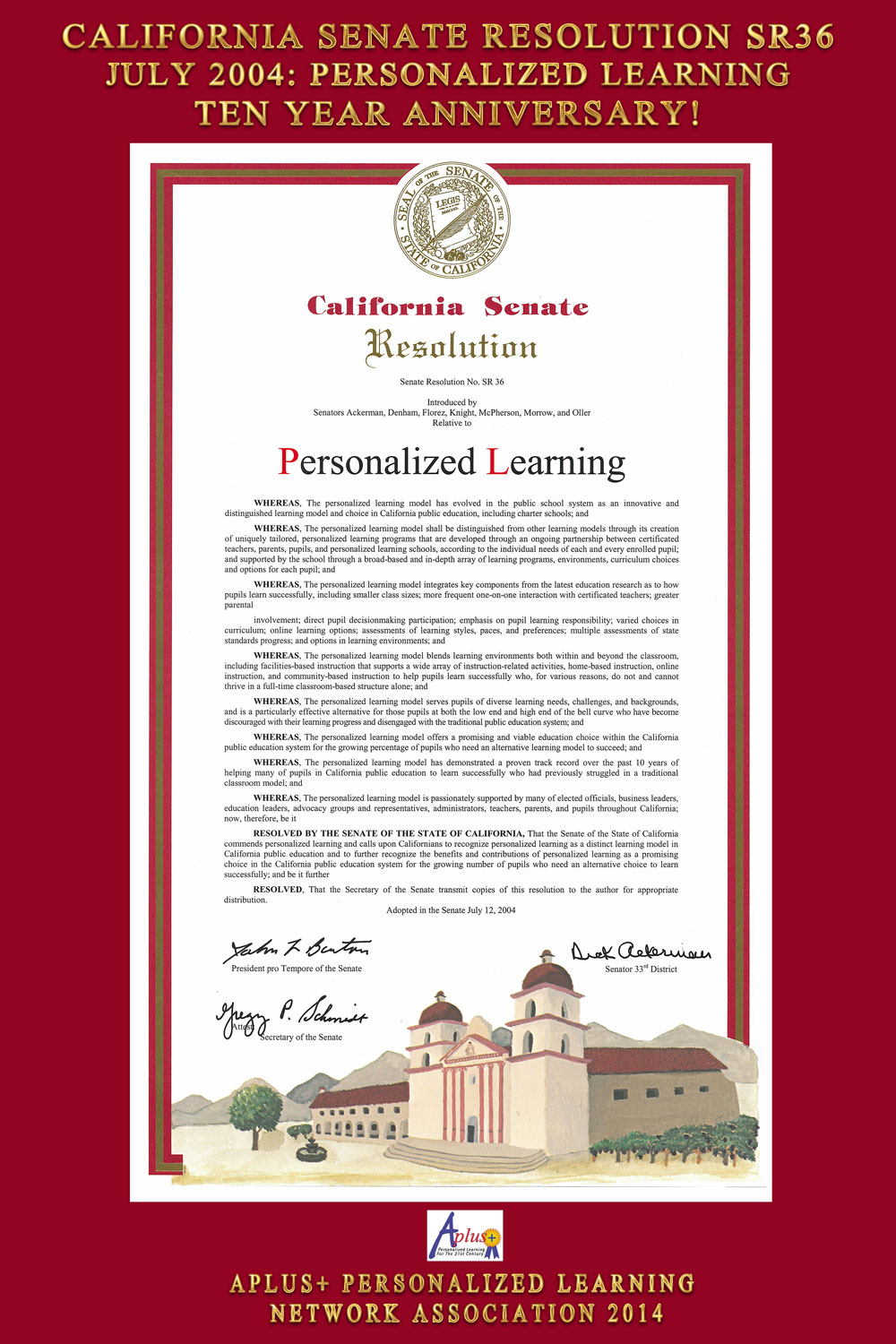Experience Personalized Learning
Unlike many other public education models that force students to conform to a rigid, largely one-size-fits-all system, Personalized Learning puts the needs of students first, honors students for being unique and gifted individuals, and tailors and supports a “personalized” learning plan for every student with choice and flexibility in how, what, when, where, and with whom each student learns.
Distinguishing Features of Our Model
- Puts students first
- Honors every student as a unique individual
- Values lasting and meaningful relationships
- Is student-centered, flexible, and adaptable to every student
- Maximizes available resources to serve the educational needs of all students
- Provides each student with a Personalized Learning Plan (PLP) that is tailored to each student’s needs, interests, aspirations and goals
- Provides choice and flexibility in the five primary variables of learning, specifically: how,what, when, where, and with whom each child learns
- Offers a university-style, menu-based education delivery system
- Supports the value and importance of ongoing collaborative relationships between our students, parents, teachers, school and community in creating the best learning plan possible for each student
- Supports collaborative partnerships with community businesses and programs to broaden and enhance the scope of choices and opportunities through which students may explore
- Cultivates partnerships with local colleges, universities, businesses and other enterprises to provide students with access and exposure to post-secondary pathways and opportunities prior to high school graduation
- Supports motivating students to learn by involving students in their learning decision-making process and ensuring that their learning process and content is relevant to their lives
- Cultivates and supports a wide variety of educational activities and learning options through one or more school resource center facilities including small classes, labs, tutoring, assessments, testing, special education services, and resource libraries
- Maintains small class sizes for students who choose subject-based classes, generally limited to 20 students or fewer
- Supports the ongoing assessment of each individual student’s learning progress through an individualized, longitudinal assessment tool that may be also used as a diagnostic tool to identify focus areas for student learning improvement
- Supports ongoing teacher professional development training in the Personalized Learning model, student learning styles, curriculum choices, collaborative relationship building, and in current state standards and other teaching requirements
How our California Personalized Learning Model Compares with Other Models on the Personalization Continuum
The Five Primary Variables of Learning Relative to Flexibility and Adaptability to Individual Students
- How each child learns
- What each child learns
- When each child learns
- Where each child learns
- With whom each child learns
Degree of Personalization Relative to Individual Student Needs and Interests
- Low: (1 point) = little or no choice, flexibility and adaptability to individual student needs and interests
- Medium: (2 points) = moderate choice, flexibility and adaptability to individual student needs and interests
- High: (3 points) = maximum choice, flexibility and adaptability to individual student needs and interests
The Personalization Continuum
Listed from Low “rigid delivery model” to High “flexible delivery model”




